Today it is difficult to imagine our table without champignons, but sometimes it is sold at such a high price that you involuntarily think about the feasibility of buying. To avoid such a difficult "dilemma", we offer you the technology of how to grow champignons at home.
Material Content:
The composition of the soil for growing champignons

The composition and manufacture of the substrate depends on the recommendations that are detailed on the container with the mycelium that you bought. If you don’t have the opportunity to prepare just such soil, you can use the universal “recipe” of natural compost containing horse manure. We offer two options.
| Constituent components | Weight in kilograms |
|---|---|
| Option 1 | |
| • Horse manure with hay humidity of 40-45 percent | 850 |
| •Urea | 4 |
| •Superphosphate | 12,5 |
| •Ammonium nitrate | 9 |
| •Ammonium nitrate | 17 |
| Option 2 | |
| •Horse dung | 2000 |
| •Straw | 51 |
| •Urea | 4 |
| •Ammonium sulfate | 9 |
| •Superphosphate | 6 |
| •A piece of chalk | 8 |
You can replace horse manure with some other one, but in most cases this negatively affects the quantitative indicator of the crop.
How to lay a mixture for planting mycelium?
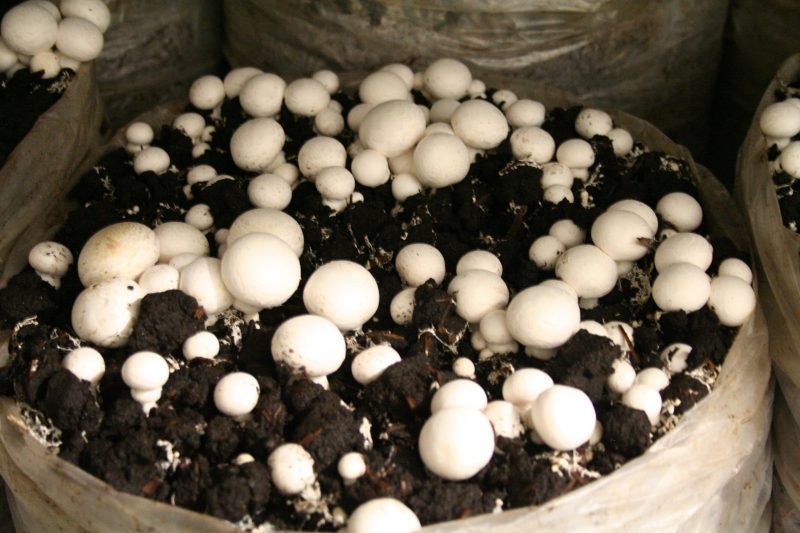
- First of all, the straw is soaked for a day in a container.
- Then it, together with manure, is laid in layers in a stack (alternating components every three layers).
- In addition, when laying straw, each layer of it is additionally moistened and 500 grams of superphosphate and two kilograms of urea are added to it.
- Then the whole pile is thoroughly mixed several times and the remaining “ingredients” are added to it.
- After the first mixing, gypsum should be added, and then one and a half kilograms of superphosphate.
- After mixing the mass three times, add chalk to it and mix everything again.
After connecting all the components in the mass, the fermentation process will begin, as a result of which the temperature in it will rise to 70 degrees. To improve the burning of the stack, try to have a height and length of one and a half meters and a width of 1.2 meters. You can use compost after three weeks.
Inoculation - planting mushroom mycelium
Mycelium is cultivated by special laboratories. This process takes place under sterile conditions. You can buy mycelium in a specialized gardening store or order on the site.

To “sow” 1 square meter of soil, you need to buy 500 grams of compote or 400 grams of grain mycelium.
- Place the pieces of mycelium in the compost. If it is springy when pressed, then you have correctly prepared it.
- Make small depressions in the soil (4-5 centimeters) and lay the mycelium here.
- If you have cereal mycelium, just sprinkle it over the top bowl of soil. Over time, the mycelium will begin to cover the entire substrate.
The mycelium grows at a temperature of 21–27 degrees. The rapid spread of mushroom threads will begin 9-13 days after planting. After this time, the substrate must be sprinkled with an additional layer of earth (about 4 centimeters) and wait another five days.
To prepare an extra layer, take peat (five parts), limestone (one part) and plain earth (four parts).
Do not forget about the systematic spraying with water.
Incubation period and temperature control
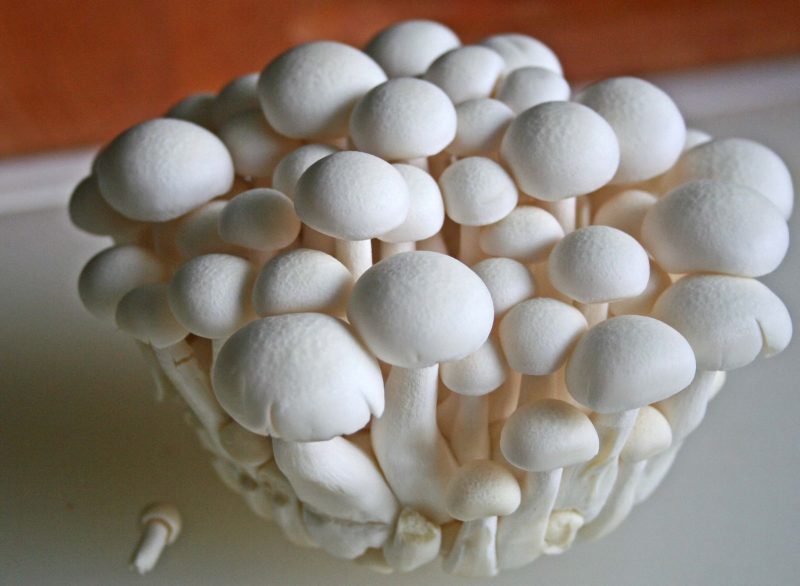
The time period over which the mycelium grows is called incubation. During this period, indoor humidity should vary between 75-95 percent. To prevent the substrate from drying out, cover it with paper or a natural cloth and spray it regularly.
Champignon care at home
Mushroom care is not related to the place and method of growing them. It involves maintaining the desired humidity and temperature in the period before and during the fruiting of the mycelium.
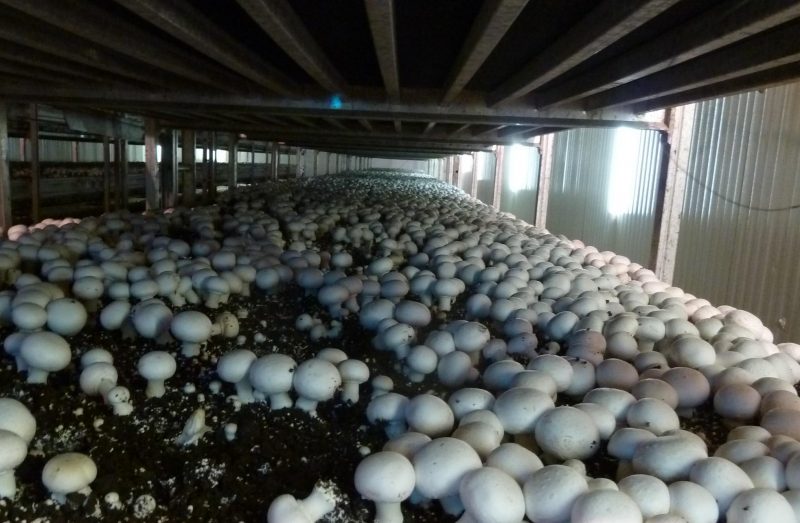
In order for the crop to be good, the following rules should be followed:
- The temperature in the room should vary between 15-17 ° C. If it rises to 20 ° C, the development of mushrooms will stop.
- Humidity should be equal to 70 percent.
- Champignons should be watered so that the compost layer does not get wet. Experts recommend using a special nozzle with a spray. It will well moisten the sprinkled soil, and prevent the formation of a crust.
- Ventilate the room regularly, especially after the first harvest. Due to air deficiency, stroma can form on the mycelium - a white crust that requires immediate removal.
When to harvest mushrooms
Champignons actively bear fruit for 2–3.5 months.

- In most cases, seven crop waves can be observed. A temporary pause between them can be a week.
- If everything is done correctly, each square meter gives 5-11 kilograms of the crop.
- The predominant portion of mushrooms (approximately 65 percent) grows in the first three waves.
Used soil will be a good fertilizer for personal plots, but it is no longer suitable for re-use for growing champignons.
Useful Tips
Only young mushrooms with a whole membrane connecting the leg and cap of the mushroom need to be collected.
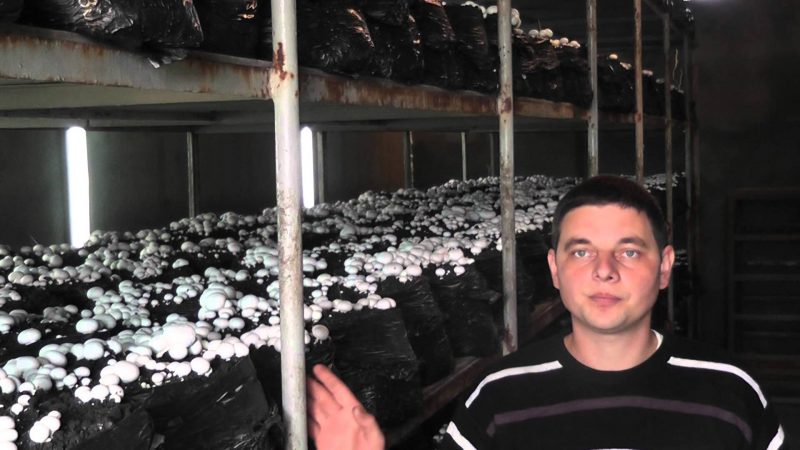
A flabby and overripe mushroom with brown plates cannot be eaten, as it can poison you.
Unlike ordinary mushrooms, champignons do not cut, but are removed from the soil with neat twisting movements. The resulting hole must be carefully sprinkled with earth and moisten.
The nuances of growing in bags, basement
The basement or cellar is an ideal place to grow champignon mushrooms.
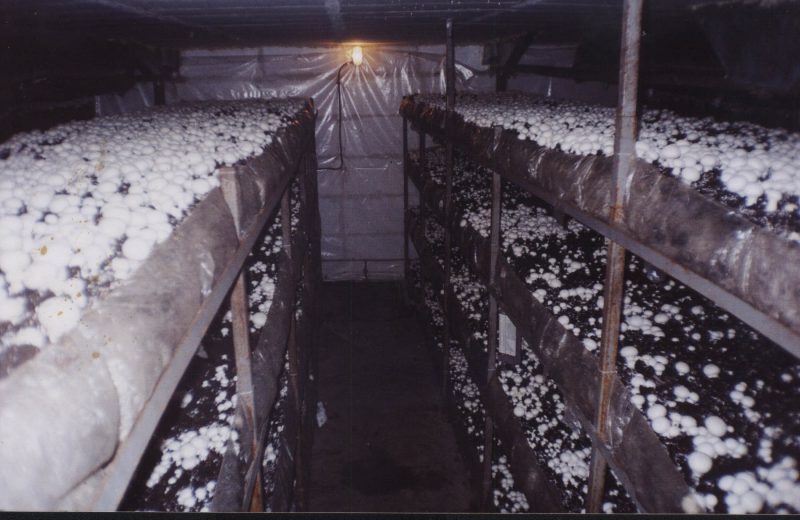
But before this, the premises must be properly equipped, observing the following rules:
- Install a hygrometer in the room to control air humidity. If it falls, spray the walls and basement floor with clean water. If the readings are too high, ventilate the room.
- Install a thermometer to monitor air temperature. If you plan to grow mushrooms only in the summer, additional heating is not needed. If you intend to harvest year-round, you need to think about how to insulate the room.
- Install the ventilation system, since the basement is a closed room. The compost in which the mushrooms are located is a constant source of carbon dioxide, which can create a sense of mustiness. Because of this, ventilation is considered mandatory. Its installation should be carried out so that it does not create drafts.
- Unlike other crops, champignons do not need additional lighting. You can screw in a standard light bulb that allows you to correctly perform the necessary manipulations.
Disinfection
To minimize crop loss due to infectious infections and pests, the basement must be pre-disinfected.
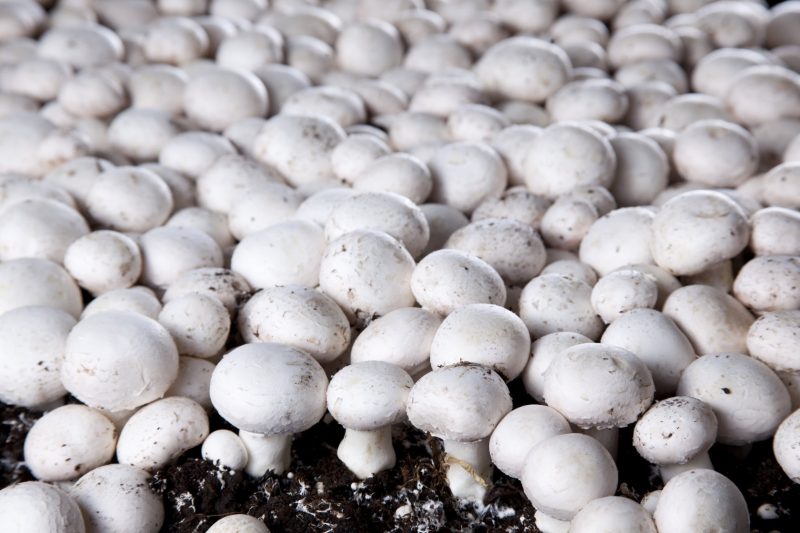
To do this, you can use a sulfur checker: light it and leave it to burn out indoors.
The ceiling and walls must be treated with a solution of lime and copper sulfate. But you can use any disinfecting methods, the main thing is that they are effective. After completing activities in the basement, you need to carry out ventilation.
Compost

To make compost horse manure, straw and nitrogen-containing mineral fertilizers are used.
Planting mycelium
- Particles of mycelium should be placed in compost to a depth of 4-5 centimeters. This is done only after fermentation is completed in it and the temperature indicator drops to 26 degrees.
- The gap between the particles should be approximately 18-21 centimeters. If you decide to use cereal mycelium, you can simply sprinkle it on compost.
- Within two weeks, the mycelium takes root in the soil. If everything went well, they begin to creep along the compost. During this period they need to be sprinkled with a small ball of soil (4 centimeters).
For the manufacture of "powder" you need to take peat, limestone and garden soil in a ratio of 5: 1: 4.
Mushroom Forcing
After 4-5 days after soil pouring, in the room you need to lower the temperature to 15 degrees. During this period, the active growth of mushrooms begins, which will yield a crop in three months.
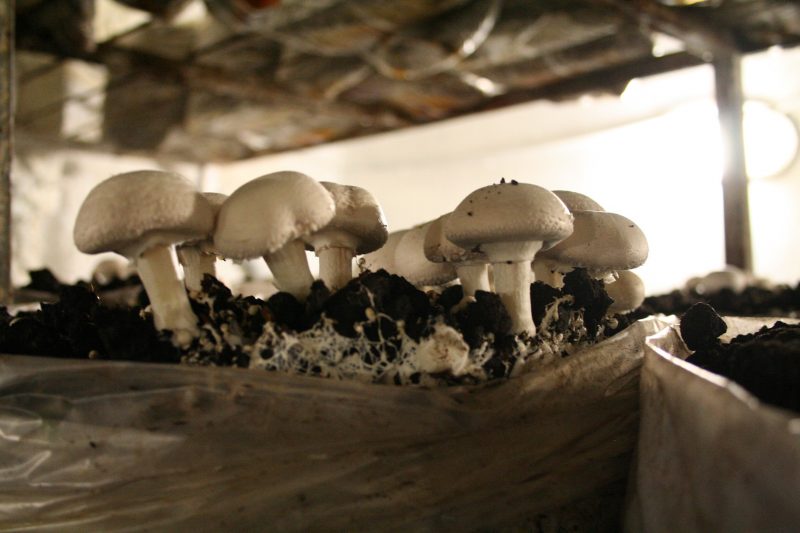
Now you know what the technology of mushroom cultivation is. As practice shows, a fairly profitable business can come out of this lesson. If you decide to make money this way, try to follow all the recommendations of specialists and have a little patience.












